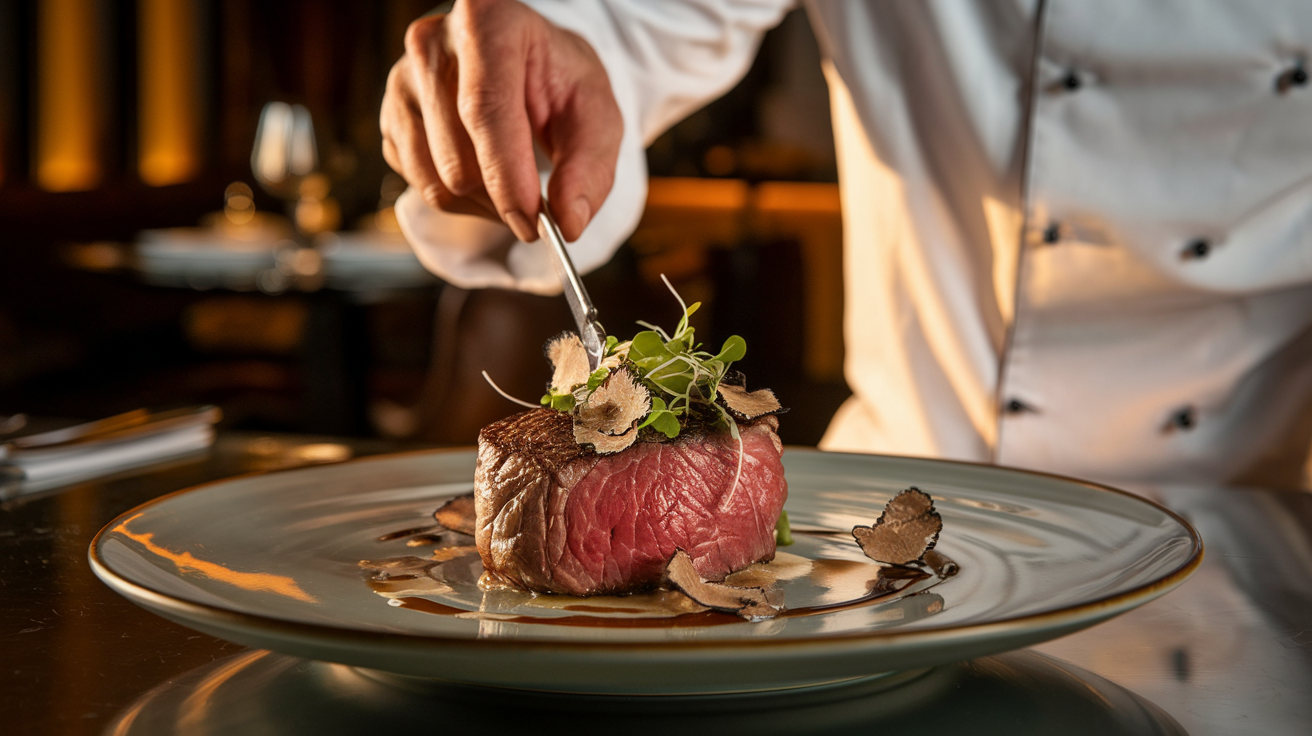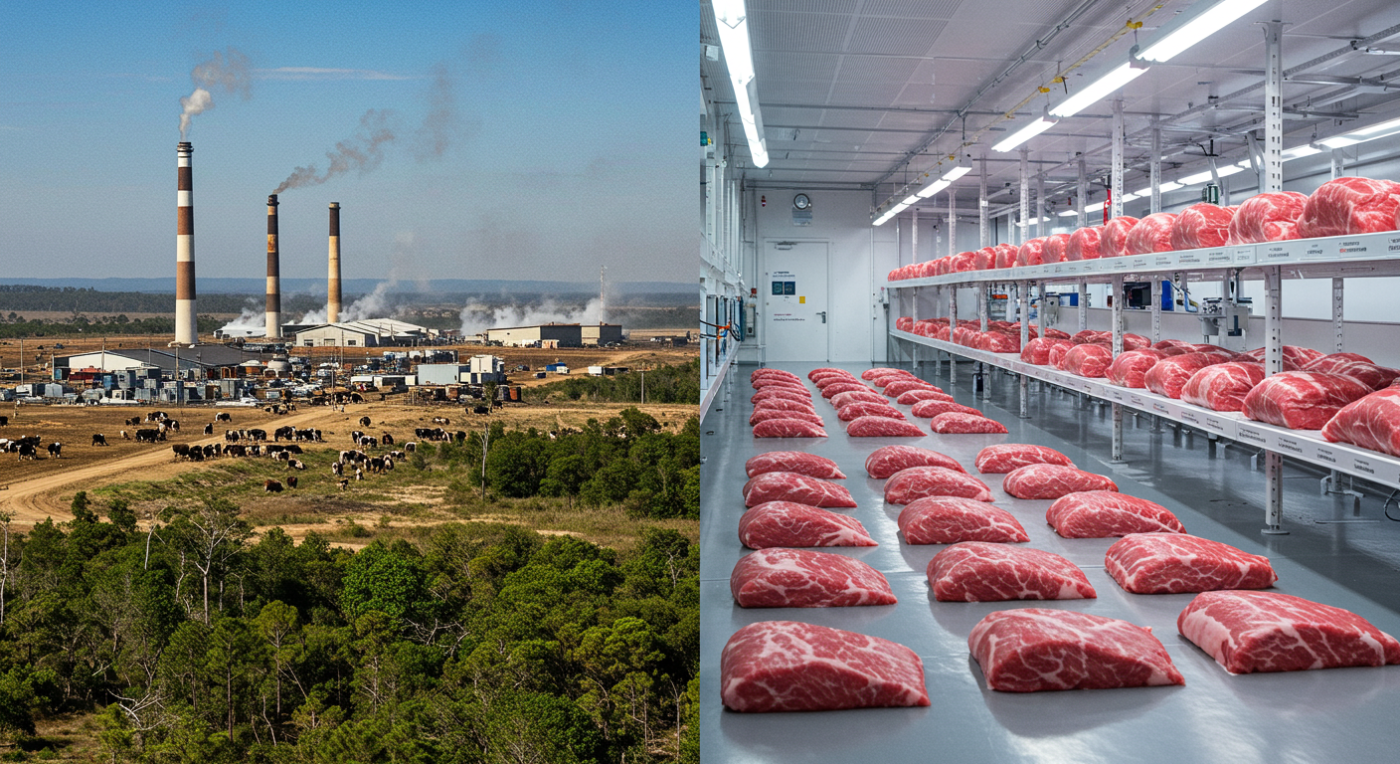Introduction
Lab-grown meat, also known as cultivated or cell-based meat, is emerging as a game-changing innovation in the food industry. Unlike plant-based alternatives, this technology involves growing real animal cells in a controlled environment, eliminating the need for slaughter. As global concerns over sustainability and animal welfare intensify, lab-grown meat presents a compelling alternative to traditional livestock farming. But how sustainable is it really? And can it truly replace conventional meat?
The Need for Change in the Global Food System
The world’s growing appetite for meat has placed immense strain on the environment. Livestock farming contributes to deforestation, water depletion, and greenhouse gas emissions. According to the UN Food and Agriculture Organization (FAO), the livestock sector accounts for nearly 14.5% of global greenhouse gas emissions. Additionally, industrial meat production is often associated with ethical concerns, including factory farming and inhumane treatment of animals.

How Lab-Grown Meat Is Made
The production of cultivated meat begins by extracting stem cells from animals, which are then nurtured in nutrient-rich bioreactors. These bioreactors replicate the conditions found inside a living organism, allowing the cells to multiply and develop into muscle tissue. The process eliminates the need for large-scale farming, reducing land and water use. However, challenges remain in making the process more energy-efficient and economically viable.
Environmental Benefits of Lab-Grown Meat
One of the most significant advantages of cultivated meat is its potential to reduce the environmental footprint of meat production. Traditional livestock farming requires vast amounts of land, water, and feed, contributing to deforestation and biodiversity loss. In contrast, lab-grown meat could dramatically lower land use while using up to 90% less water. Additionally, studies suggest that if powered by renewable energy, the carbon footprint of cultivated meat could be significantly lower than conventional beef production.
Ethical Considerations: A Step Toward Animal Welfare
Unlike conventional meat production, cultivated meat does not involve the slaughter of animals. This innovation aligns with the growing consumer demand for cruelty-free food options. Organizations such as PETA and the Humane Society have expressed support for lab-grown meat as a more ethical alternative to factory farming. While some consumers remain skeptical about eating lab-grown products, ethical considerations could play a crucial role in shifting public perception.

Challenges and Limitations
Despite its potential, cultivated meat faces several obstacles before it can become a mainstream food option. One of the primary challenges is the high production cost, as growing meat in bioreactors requires expensive nutrient media. Another issue is energy consumption—some reports, including a 2024 UC Davis preprint, suggest that if current production methods remain unchanged, cultivated meat could have a higher carbon footprint than traditional beef. To overcome these hurdles, scientists are exploring more efficient cell culture media and renewable energy solutions.
Lab-Grown Meat in Fine Dining: A Sustainable Luxury
As cultivated meat technology advances, it is making its way into high-end restaurants. Renowned chefs and Michelin-starred establishments are experimenting with lab-grown meat, positioning it as a premium, sustainable ingredient. Instead of being seen as a mere substitute for traditional meat, cultivated meat is being used to create gourmet dishes that highlight its unique texture and flavor. This approach could help introduce lab-grown meat to a more discerning audience while promoting sustainability in fine dining.

Case Study: How Gourmet Restaurants Are Embracing Lab-Grown Meat
Several high-profile chefs have already begun integrating cultivated meat into their menus. In 2023, celebrity chef José Andrés partnered with a cultivated meat startup to create a lab-grown chicken dish featured in select fine dining restaurants. Similarly, in Singapore—the first country to approve cultivated meat for commercial sale—restaurants have been serving dishes made from lab-grown chicken, offering a glimpse into the future of sustainable gastronomy.
Positioning Cultivated Meat as an Exclusive Ingredient
Rather than being marketed as a direct competitor to conventional meat, lab-grown meat is increasingly positioned as a luxury product. This strategy allows restaurants to charge a premium while helping consumers become more familiar with the concept. As production scales up and costs decline, cultivated meat may eventually transition from a high-end delicacy to an everyday staple, much like plant-based meat alternatives did in recent years.

Cultivated Meat and Wine Pairings: A New Culinary Experience
As lab-grown meat enters the gourmet world, sommeliers and chefs are exploring ideal wine pairings to enhance its unique flavors. Since cultivated meat can be designed to have a specific fat content and texture, it opens new possibilities for pairing with different wines. For example, lab-grown Wagyu beef, with its rich marbling, pairs well with full-bodied red wines like Cabernet Sauvignon, while lighter cultivated chicken complements crisp white wines such as Sauvignon Blanc.
The Impact on the Traditional Meat Industry
The rise of cultivated meat poses both challenges and opportunities for the traditional meat industry. Some major meat producers, such as Tyson Foods and Cargill, have already invested in cultivated meat startups, recognizing the potential of this emerging market. However, livestock farmers and meat industry advocates argue that lab-grown meat could disrupt the economic stability of conventional farming, particularly in regions where livestock production is a key part of the economy.

Regulatory Hurdles and Market Acceptance
Despite its promise, cultivated meat must navigate complex regulatory landscapes before it can achieve widespread adoption. Countries like Singapore and the United States have already approved some forms of cultivated meat for commercial sale, but many nations remain cautious. Food safety concerns, labeling regulations, and consumer trust will play crucial roles in determining how quickly lab-grown meat becomes a mainstream option. Overcoming skepticism and educating consumers about the benefits of cultivated meat will be essential for its success.
The Future of Cultivated Meat: Scaling Up for Mass Adoption
As technology advances, the cost of producing cultivated meat is expected to decrease, making it more accessible to the general public. Researchers are working on optimizing cell culture media, developing more energy-efficient bioreactors, and integrating renewable energy sources into the production process. If these innovations succeed, lab-grown meat could become a staple in supermarkets and restaurants worldwide, significantly reducing the environmental impact of meat consumption.

Will Consumers Embrace Lab-Grown Meat?
Consumer perception remains one of the biggest barriers to widespread adoption. While some people are excited about the ethical and environmental benefits, others are skeptical about the idea of eating “lab-grown” food. However, market studies suggest that younger generations, particularly Millennials and Gen Z, are more open to trying alternative proteins, especially if they align with sustainability and animal welfare values. Effective marketing and transparency in production processes will be key to gaining public trust.
Conclusion: A Sustainable Culinary Revolution
Lab-grown meat represents a transformative shift in how we produce and consume animal protein. With the potential to reduce environmental damage, eliminate animal suffering, and introduce new culinary experiences, it is poised to become a major player in the future of food. While challenges remain—such as production costs, regulatory approval, and consumer acceptance—the progress made so far suggests that cultivated meat could soon be a mainstream reality. The question is no longer if lab-grown meat will become widely available, but when.
Share your photo and get featured on our social media.
Upload now and shine with The Glanz!